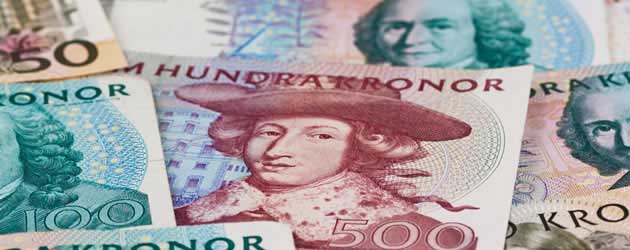
The Pound managed to hold onto gains against the Norwegian Krone but weakened against the Swedish Krona as manufacturing data out of the UK, Norway and Sweden all spurred movement in the exchange rate market.
Sterling went onto the back foot against most major peers on Wednesday after data released by Markit showed that Manufacturing activity in the UK grew at its slowest pace in 17 months in September as weakness in the Eurozone continued to drag on production and orders.
The Markit/CIPS Manufacturing Purchasing Managers Index fell to a reading of 51.6, the lowest level seen since April 2013, and was below economist expectations for a reading of 52.5.
The disappointing figure could cause the Bank of England’s policy makers to become more cautious as to whether the UK economy is ready for a rising of interest rates, something that dragged the Pound lower.
‘The weakening of the manufacturing PMI data in August was cited as a major concern among the Bank of England’s Monetary Policy Committee. September’s disappointing reading will therefore add to the air of caution as to whether the economy is ready for higher interest rates,’ said Rob Dobson, senior economist at Markit.
Norwegian Manufacturing Data Disappoints
Despite the disappointing data, the Pound was able to remain firmer against the Norwegian Krone. The Scandinavian currency took a hit after manufacturing data came in below forecasts.
The data compiled by the Norwegian Association of Purchasing and Logistics showed that Norway’s manufacturing sector contracted for the first time in three months in September as output fell to its lowest level since July last year.
The Purchasing Managers’ Index fell to 49.4 in September from 51.8 in August. The indicator fell below the 50 neutral levels when it was forecast to drop marginally to 51.
The new orders index declined to 49.1 from 50.7 in the prior month. Production continued to expand in September. However, the corresponding index dropped to 51.1 from 54.4 in August.
Employment in the sector also fell below the 50 mark last month.
‘The Industrial sector in Norway is heading toward more difficult times and you can probably relate that to what’s going on with lower investment activity on the continental shelf,’ said Marius Gonsholt Hov, an economist from Svenska Handelbanken.
Swedish Manufacturing Improves
Against the Swedish Krona the Pound fell after data out of the Scandinavian nation showed that, its manufacturing sector grew at faster pace than expected last month.
The manufacturing purchasing managers’ index, or PMI, rose to 53.4 in September from 51 in August. The rise was caused by the rebound in the index measuring manufacturing production, by 8.8 index points to 59.3. The index for new orders also rose to a figure of 53 in September from 51.8 in August.
The Pound could recover some ground against the Krona on Thursday if the latest UK Construction PMI report comes in positively. No major data releases are due from either Norway or Sweden.
UPDATE
Before the publication of the UK’s Construction PMI, the Pound to Norwegian Krone (GBP/NOK) exchange rate was trending in a narrow range.
The pairing fluctuated between highs of 10.4449 and lows of 10.4208. The Pound was 0.4% lower against the Swedish Krona.
However, as the European session continued, Sterling was supported by an unexpected climb in the UK’s Construction PMI. The index rallied from 64 to 64.2 in September rather than declining to 63.5 as anticipated.
If tomorrow’s UK Services PMI also delivers a positive surprise, the GBP/NOK and GBP/SEK exchange rates could close out the week on a high.

